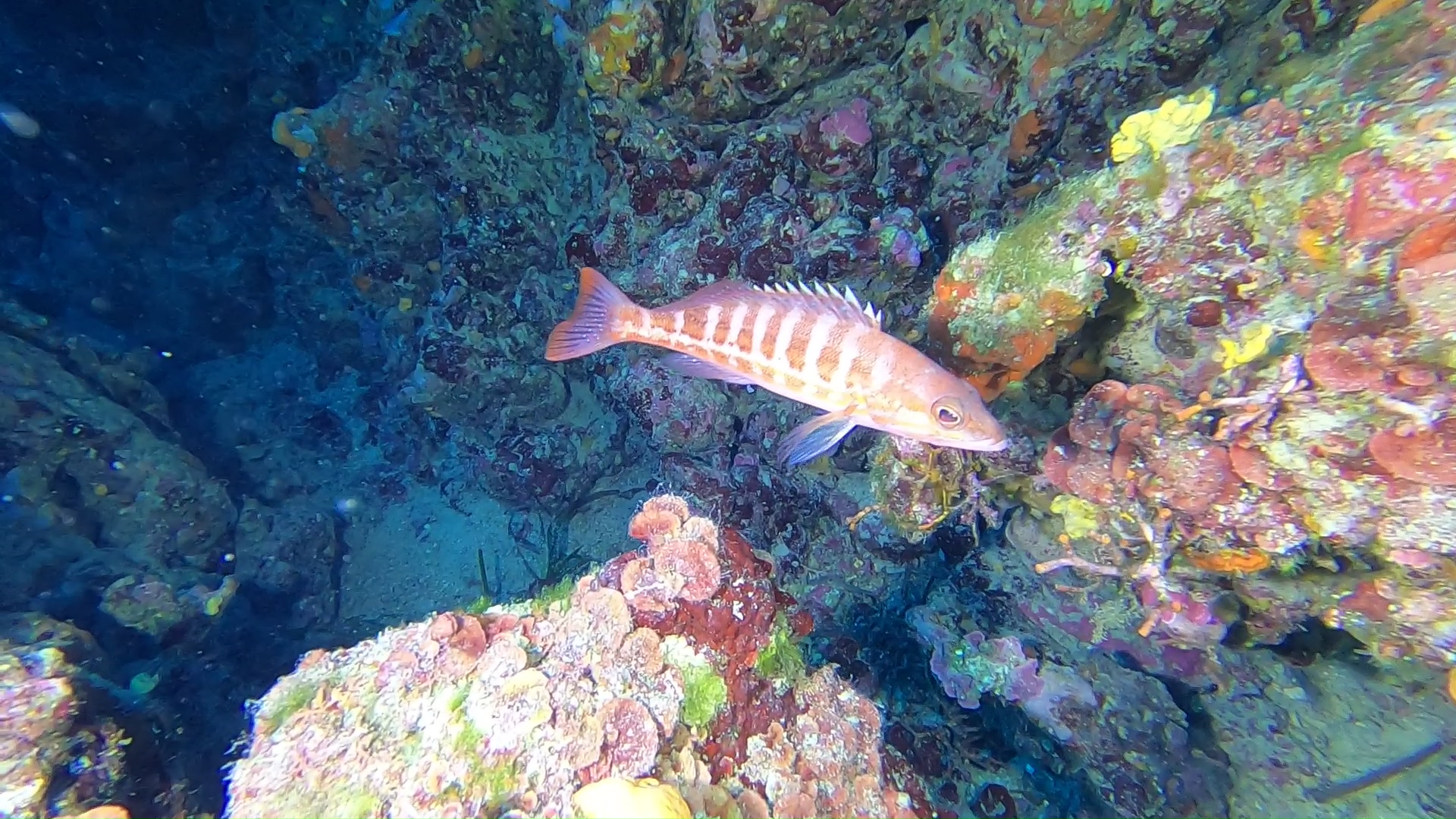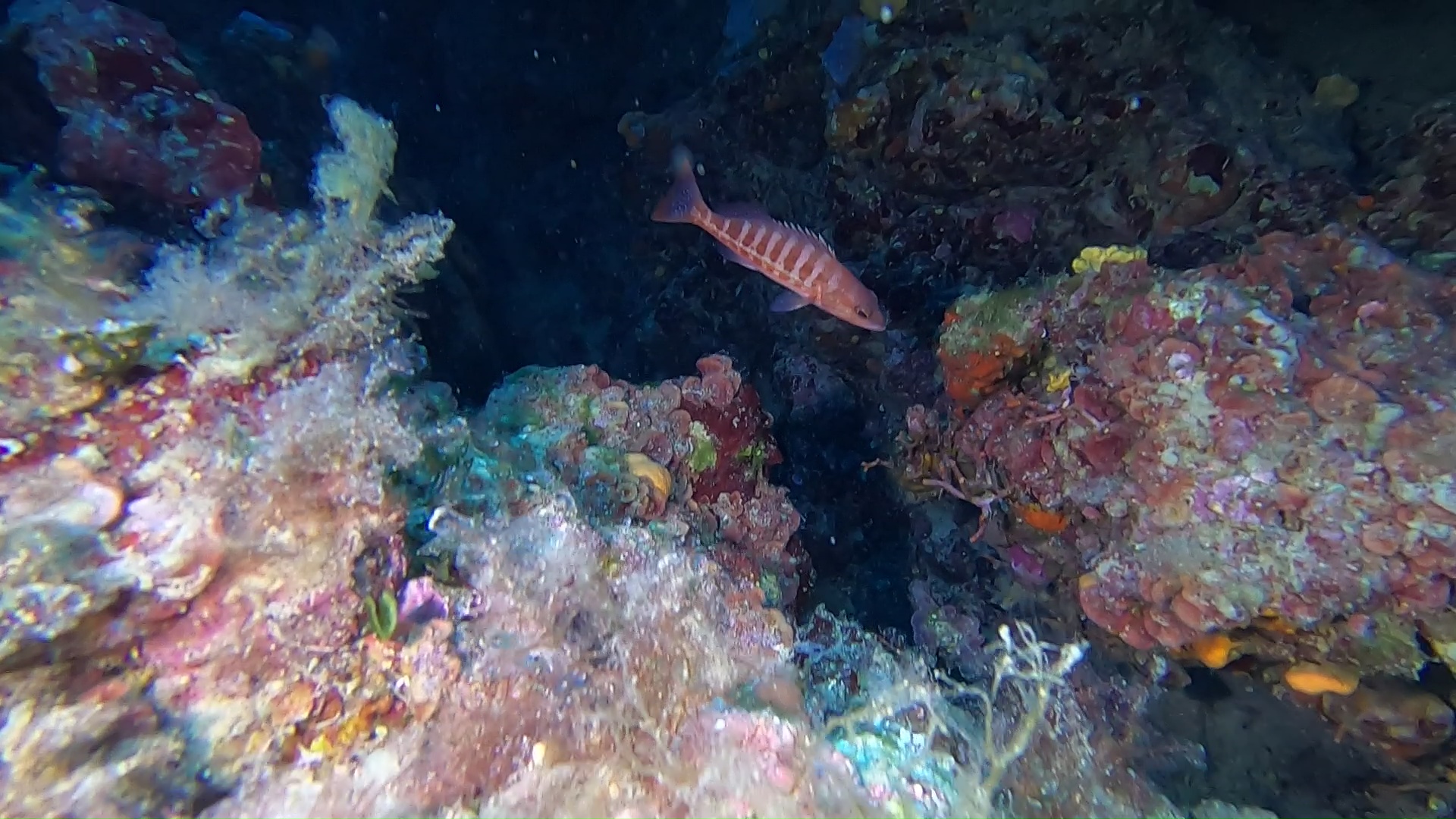Perchia - Serranus cabrilla
Comber fish (Serranus cabrilla Linnaeus, 1758) is a seawater bony fish belonging to the Serranidae family.

In this video we met him on a rock wall, on a backdrop of about 39/40 meters. The Serranus cabrilla generally prefers coralligenous bottoms where there are coves and holes where to take refuge, since like all serranids it is both a predator and a prey.
Distribution and habitat
Perch is widespread along the coast of the eastern Atlantic Ocean, from the English Channel to the Cape of Good Hope, including the Azores, Madeira and Canary Islands. It is very common in the Mediterranean and is present in the Black Sea. It is uncertain whether it is also present in the Red Sea by immigration from the Mediterranean.
It lives on the rocky seabed and on the grasslands of Posidonia oceanica. In deep waters it can also populate sandy or muddy bottoms. It is usually a strictly coastal fish but can be found up to 500 meters deep.

Description
The body is elongated, round section with pointed muzzle. The mouth is very wide, with small teeth and full lips. The eyes are large. The dorsal fin has a first part consisting of 10 backbones, while the terminal part is composed of soft rays, and is rounded. The ventral and pectoral fins are large and rounded. The caudal fin is slightly forked. The flakes are quite small.
The livery is quite variable and consists of a light brown or reddish brown background, streaked vertically by 7-8 large irregular bands reddish brown more or less dark and horizontally by 1-3 regular orange or golden lines that continue obliquely on the head of the fish. In the middle of the body there is a clear longitudinal band. The fins are yellowish.
It exceptionally reaches a length of 40 cm, usually under 25 cm.

Biology
It is a territorial fish with solitary habits. It is strictly diurnal, the night takes refuge on the seabed where it takes on a lighter livery.
Supply
It feeds on fish, cephalopods and crustaceans. In spite of the small size it is a very aggressive predator, which does not hesitate to attack even prey of a little smaller size than its own.
Reproduction
It occurs in spring and early summer.
https://it.wikipedia.org/wiki/Serranus_cabrilla
https://en.wikipedia.org/wiki/Comber_(fish)
https://www.intotheblue.it/2020/07/02/serranus-cabrilla-perchia-comber-fish/
